

https://christopheraxworthymusiccommentary.com/2023/12/17/steinway-celebrates-their-first-christmas-at-the-helm-in-milan/
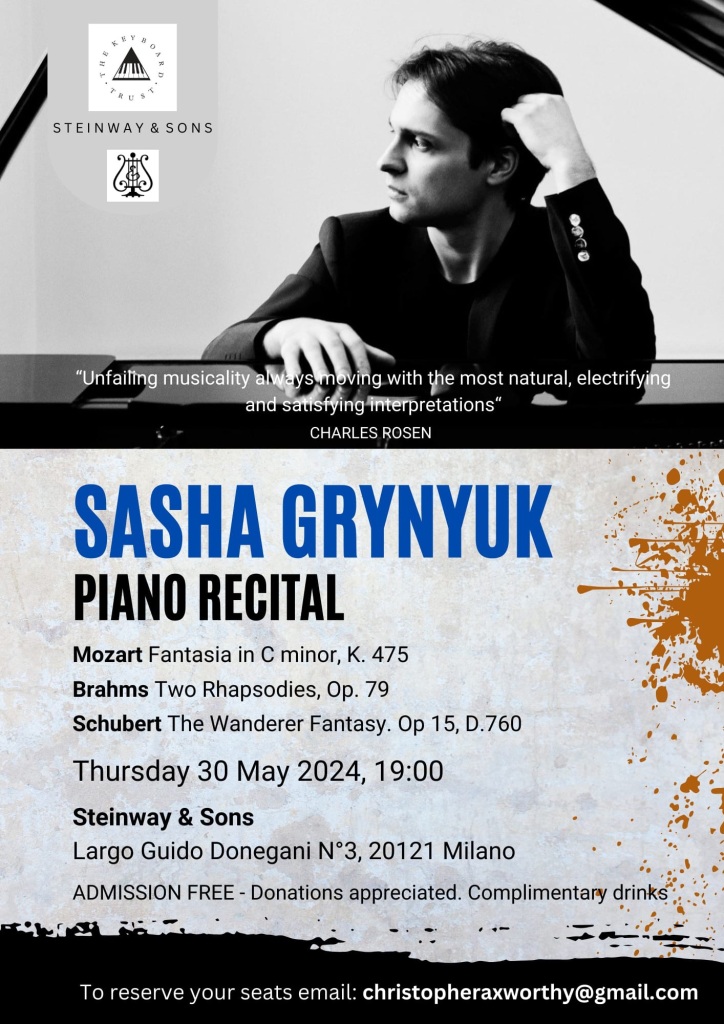

There was an imperious opening to the Fantasia but combined with great tenderness .The startling contrasts were played with disarming simplicity but always with a menacing twist in the tail as this great drama was played out in an absolutely operatic way. In Sasha’s poetic hands one could envisage the drama unfolding as there was an overall sound even where Mozart writes ‘forte’ and then sudden ‘piano’ and the added gasps of ‘fp’ . Sounds that were always in the context of actors on stage conversing with one another in an age of civilised mutual anticipation.The Allegro burst onto the scene with dynamic drive with Sasha always keeping the sound under control where the contrasts and rhythmic drive were of more importance than the mere beauty of the voice . Playing of impeccable style and authoritative musicianship it was the ‘Più Allegro’ that truly ignited the piano with sumptuous rich orchestral sounds of dynamic drive and clarity.The ‘recitativi’ were pure opera as the voices conversed , punctuated only by the comments from the ‘tutti’.The return of the opening was like re visiting a distant landscape, which after a brief reminder took flight as Mozart paved the way so dramatically to the Sonata that it precedes.

The two Brahms Rhapsodies were played with nobility and ravishing beauty. Grandiose sounds but also extreme delicacy with wild outbursts short lived as radiance and beauty were allowed to reign. A masterly use of the pedals allowed Sasha to find orchestral sounds of dynamic drive and urgency but always with a glorious outpouring of golden sounds on this sumptuous concert grand .A piano so generously offered to artists such as Sasha by the dynamic new manager, Maura Romano, of this beautiful new flagship showroom for Steinways just a stone’s throw from that other Mecca that is La Scala Opera House.

It was the orchestral sounds that opened the ‘Wanderer’ that were played with burning intensity as Sasha could now reveal the true nobility of this remarkable work.There was an architectural shape and sweep to the genial transformation of themes, that was to be the inspiration for Liszt and later for his son in law,Richard Wagner. It was the Adagio – ‘The Wanderer’ – that Sasha gave a truly orchestra fullness too with its quartet richness where every strand was of vital importance.The variations that followed were of chameleonic character from the gentle weaving of the first to the explosive second and the ravishing mellifluous beauty of the third .The gently cascading embellishements of the last were transformed into such a typically Beethovenian tempest .A true eruption played by Sasha with astonishing control and virtuosity but above all the sense of balance of a conductor who is listening to the whole and steering us through the maze of notes with intelligence and clarity of vision.There was the rich embroidery of the Scherzo that after the beseeching innocence and questioning beauty of the Trio was to erupt with cascades of notes and driving rhythms leaving us breathless at the foot of the mighty final Fugato. Nobility and dynamic drive were allied to passion and orchestral colours that Sasha played with unrelenting conviction and artistry. His scrupulous attention to the detail in the score allowed the music to rise and fall as the composer has very meticulously indicated. A mighty work restored to greatness as indeed Richter did many years ago with his landmark recording in collaboration with the musicologist Paul Badura Skoda,taking the music from being a vehicle for an apprentice and giving it back into the hands of a great artist.
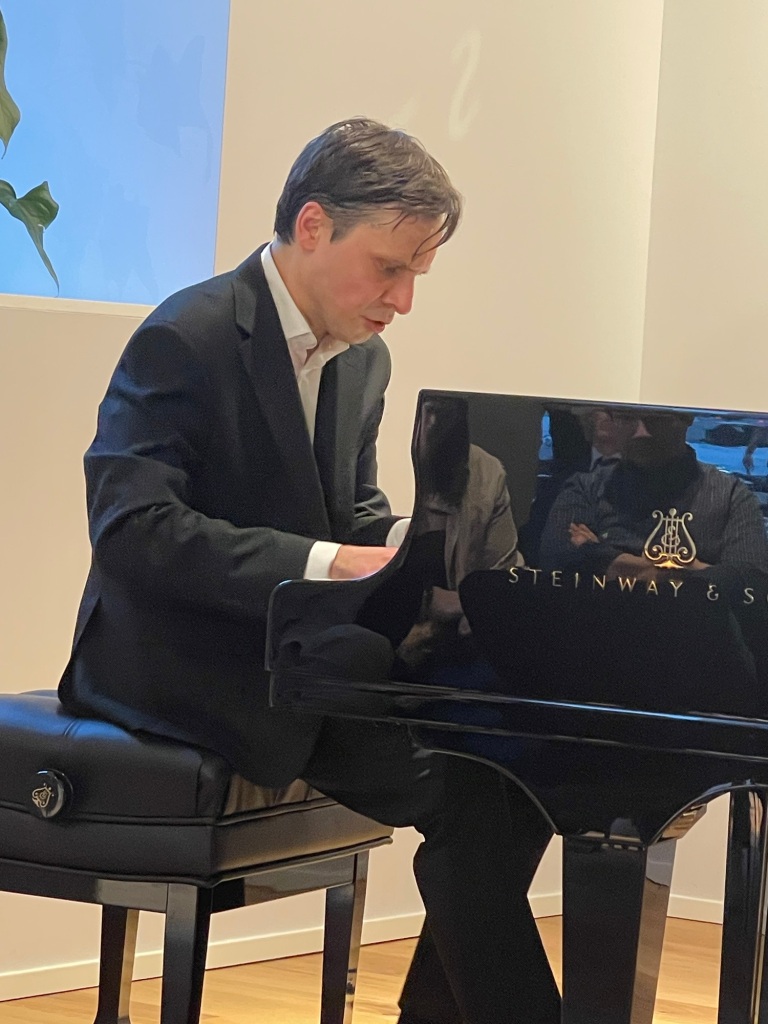
It was the great ‘old’ school of Perlemuter or Tagliaferro who would show us ,with the ‘weight’ of their true deep legato, a line clearly defined ,never allowing fussy detail to cloud the overall vision.This was in a way the performance that Sasha gave us today of ‘Ondine’ that he played as an encore. An encore but also in Milan a wish to enjoy the sumptuous sounds of this beautiful new Steinway Concert Grand that sits so proudly in the flagship of Steinways .There were of course the enormous number of notes that were played with remarkable mastery but there was a clarity of line that made ‘Ondine’ immediately so enticing. A sparkling brilliance as this water nymph splashed her way in and out of the water that Sasha created with fluidity and luminosity. We were not aware of the remarkable technical hurdles as the music flowed constantly forward like the water it was depicting.The massive climax was played with a clarity ,where the musical line was surrounded by clouds of notes,without any slowing or muddying of the texture.



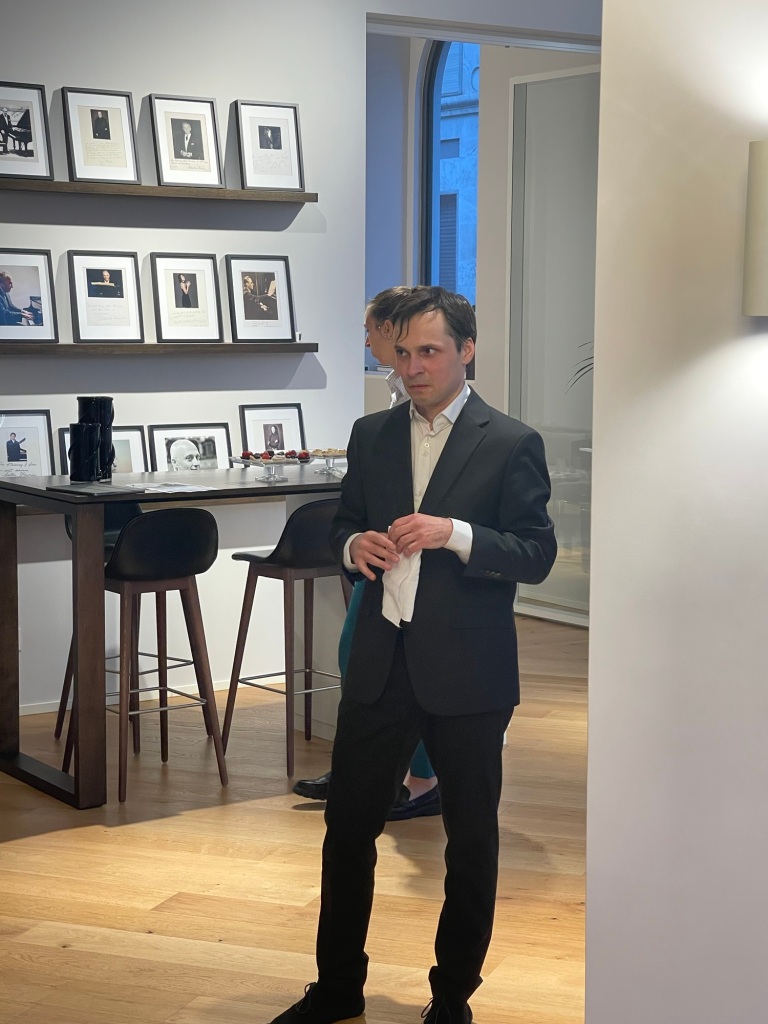



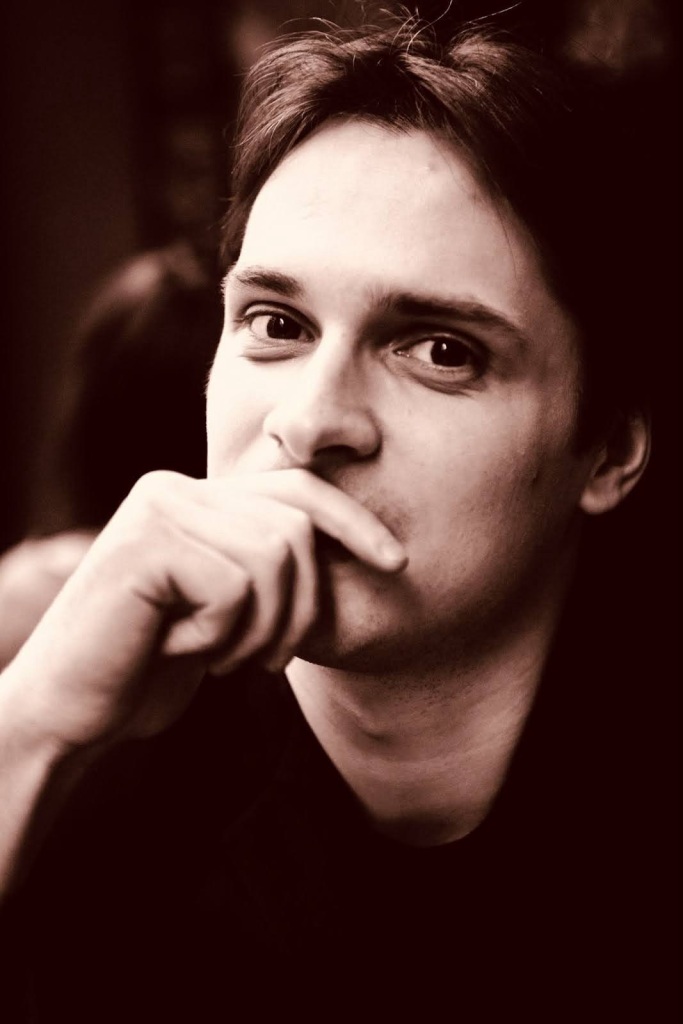
https://www.britishinstitute.it/en
Piano Recital by Sasha Grynyuk
31 May – 18.30
Born in Kyiv, Ukraine, Sasha Grynyuk studied at the National Music Academy of Ukraine and later at the Guildhall School of Music and Drama in London.
Winner of numerous competitions, prizes and awards, Sasha has performed around the world in major venues including Wigmore Hall, Barbican Hall, Royal Festival Hall, Queen Elizabeth Hall (London), Carnegie Hall (New York) and the Teatro Real (Rio de Janeiro). He has performed with such orchestras as the Royal Philharmonic, Bergen Philharmonic and the National Symphony Orchestra of Ukraine.
“An impressive artist with remarkable, unfailing musicality always moving with the most natural, electrifying, and satisfying interpretations”. Charles Rosen (legendary American pianist and critic)
PROGRAMME:
Mozart Fantasia in C minor K.475
Brahms Two Rhapsodies op.79
No.1 b minor Agitato
No.2 g minor Molto passionato, ma non troppo allegro
Schubert The Wanderer Fantasie in C major, Op. 15 (D. 760)
1. Allegro con fuoco ma non troppo
2. Adagio
3. Presto
4. Allegro

Sasha’s second concert was in the beautiful Harold Acton Library in Florence .Now part of the British Institute it has an 1890 Bechstein piano in its midst that Angela Hewitt has quite rightly said is the right piano for these surroundings. It is a piano with a soul and a sound of antique beauty like looking at a ‘daguerreotype’ photo that has faded with age but the memory of past glories has remained within its very bones. A piano with a past that has a story to tell to he who can persuade her to give up her secrets.

Sasha is just such a musician or should I say magician because he could conjure up sounds of exquisite subtlety and tonal refinement as he delved deep into the piano and persuaded it with love and mastery to give up its secrets and allow the music to unfold every bit as expressive as the human voice. There was a luminosity and glow to the sound with a natural fluidity with no hard edges.
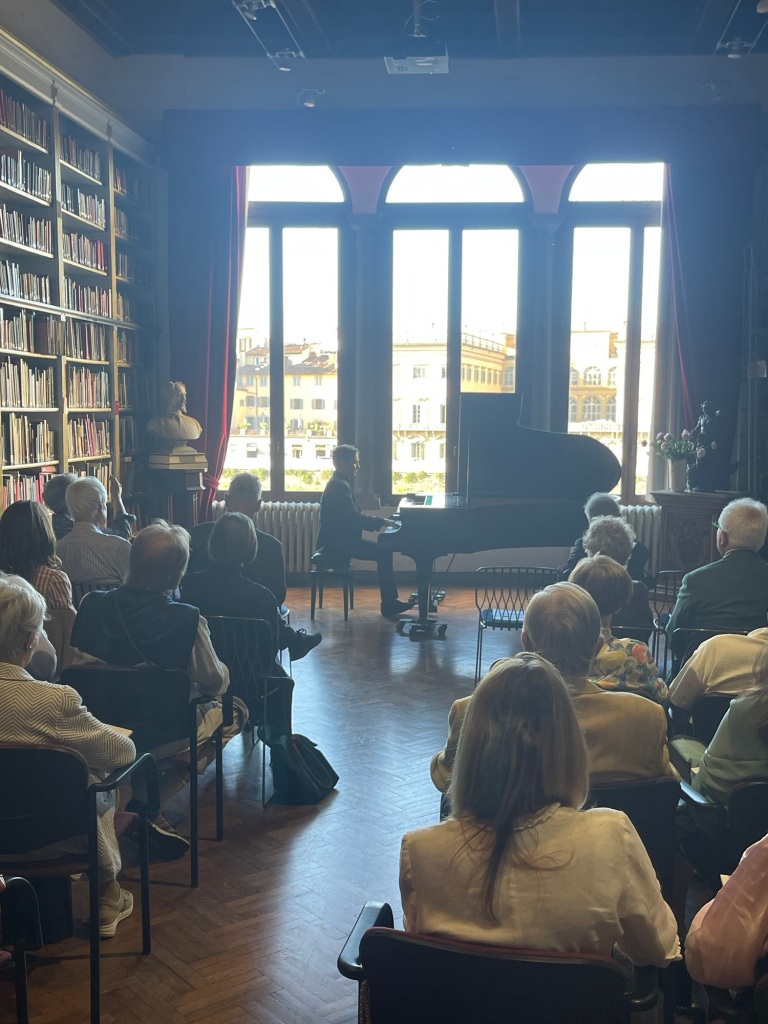
The Mozart was quite extraordinary as every note had a different inflection where even the imperious opening seemed to take on a different significance .There was magic in the air tonight with Brahms Rhapsodies that were not the usual hard hitting passionate declarations but sumptuous full sounds of great luminosity followed by etherial golden whispers of poignant meaning.

A monumental performance of the ‘Wanderer’ fantasy that from the very first call to arms was transformed into living sounds of searing intensity and urgency. Sasha’s quite extraordinary sensitivity to sound was because he was listening to every note that his hands were extracting from this ‘casserole ‘ ( as Vlado Perlemuter would call a piano of a certain vintage ) .He recreated a much maligned work and transformed it into the masterpiece that had influenced all that came after it. A transformation of themes that was to be the new path for composers such as Liszt and even more importantly his son in law Richard Wagner.Etherial sounds mixed with a glorious fluidity of colours rarely found on modern day pianos was used by Sasha to demonstrate that music must speak and in order to do that it must make sense which requires extraordinary concentration and control.
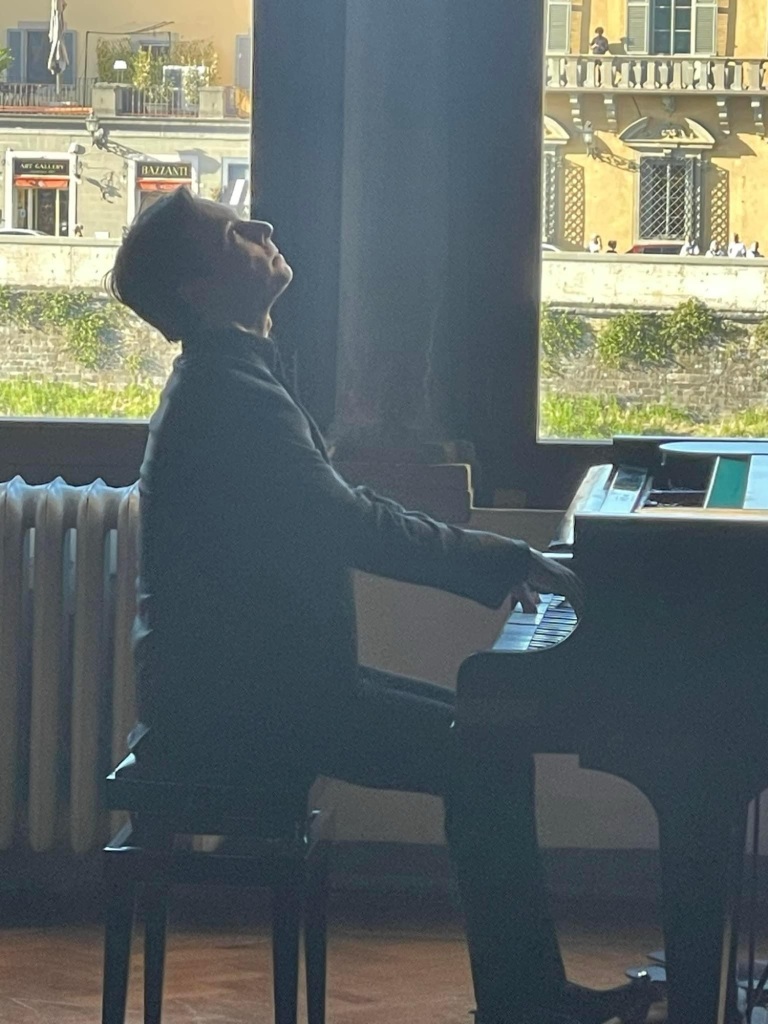
This piano does not play itself but will reveal its secrets only to the finest musicians who have a sensitivity to sound and balance. It is the difference between a ‘cordon bleu ‘ where all the senses are involved : taste ,smell,texture and beauty to create something unique that will remain in the memory for long to come. And there is the perfection of modern day pianos which can almost play themselves ( the new ‘Spiro’ piano at Steinways actually does that and can reproduce via computer any performance that is programmed with superhuman fidelity) but it is difficult to find the sounds that these old German pianos still contain.In a way it is the difference between the convenience of a micro oven or the laboriously slow wood heated furnace. It was Rosalyn Tureck who said that her favourite piano was still the ‘old’ Bechstein as she had such a sensitivity to sound that if she found the piano lid open on stage at the beginning of a concert she would look aghast as she set about removing any speck of dust on the keys that might interfere with her super sensitive fingers. Chloe Mun who had played on this piano last year confided that for the classical repertoire she loved this piano much more than the modern pianos with their perfect technical brilliance.
Chloe Jiyeong Mun in Florence-A musical feast of whispered secrets of ravishing beauty
A monumental performance not of forceful virtuosity but of thoughtful musicality.There was magic in the air as Sasha transformed this rarified atmosphere where every one of us was involved in a musical voyage together with the artist as the washes of sound in Ravel’s ‘Ondine’ filled this beautiful library with ravishing sounds of rarified beauty. A magic carpet on a voyage of discovery.
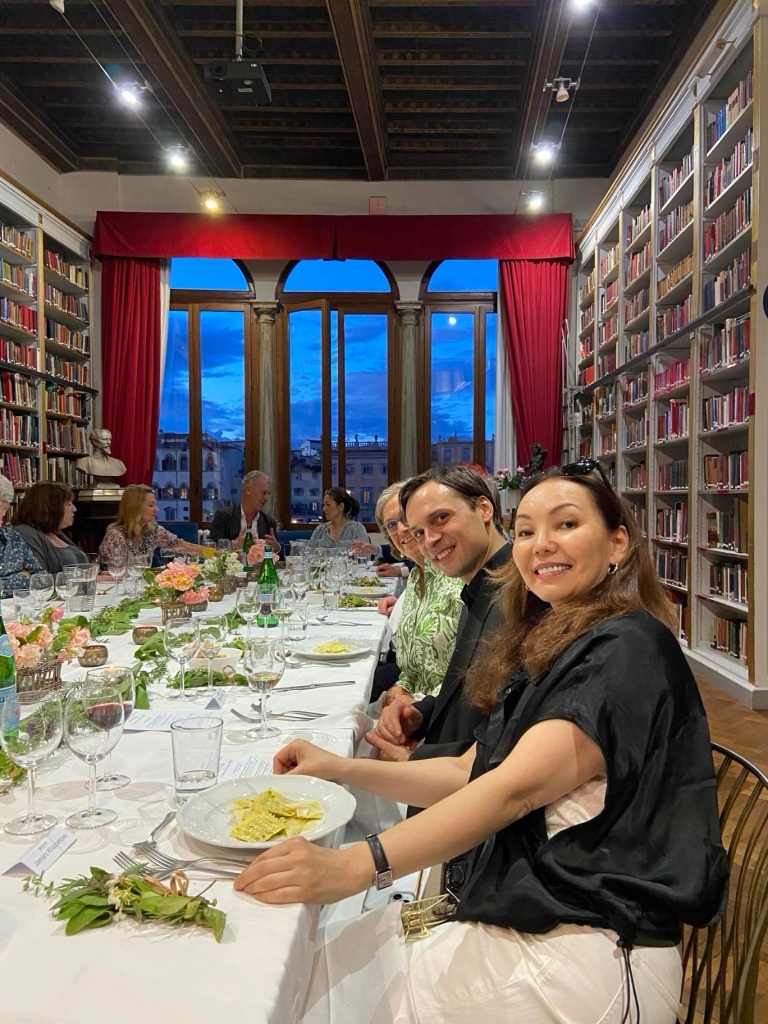
Another miracle was performed by Simon and Jennifer Gammell transforming the concert hall into a table truly fit for a King as there followed a sumptuous feast for the annual meeting of the patrons of the British Institute. A short speech from Sir David Scholey exclaiming that he would gladly return every Friday to experience such miracles of music and cuisine – transformation of themes indeed!
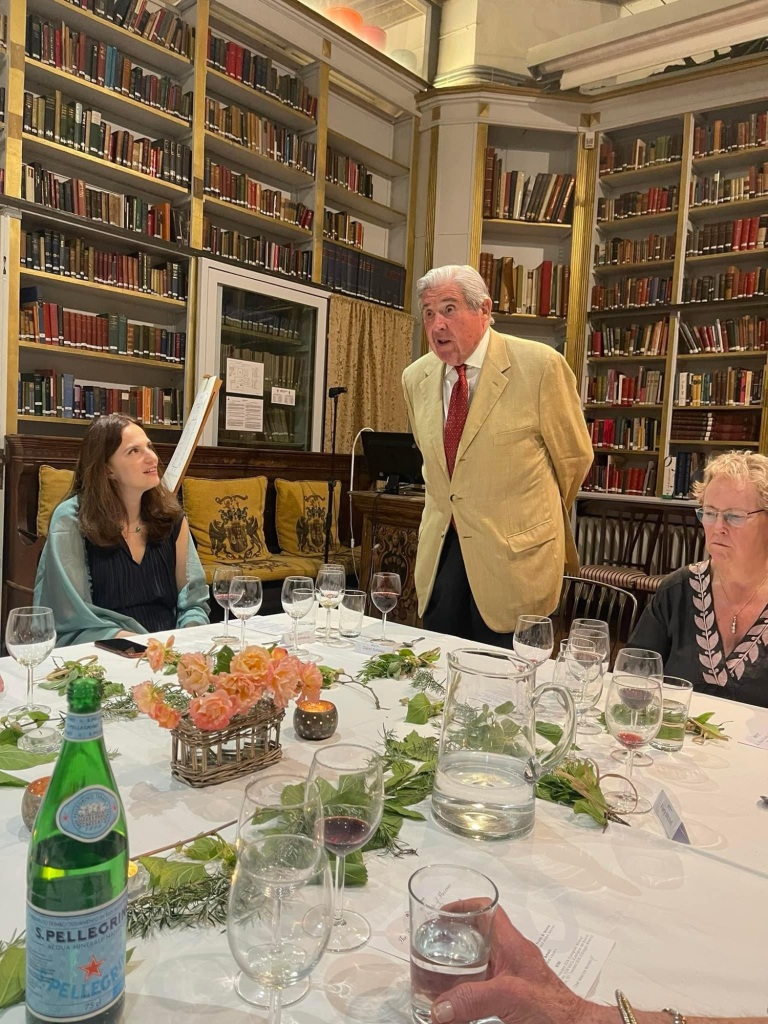
The ever sensitive David also reminded us that whilst Sasha was playing, his wife had received a message from her parents in Odessa saying that bombs were being dropped on their beloved city in that very minute.Not to dampen the proceedings but to make us aware that a room with a view should also look on the distant horizon and see a world still in conflict.Make music not war is a very simplistic motto to follow but not so easy to convince deeply scarred peoples with conflicting views and traditions.We can and must try!


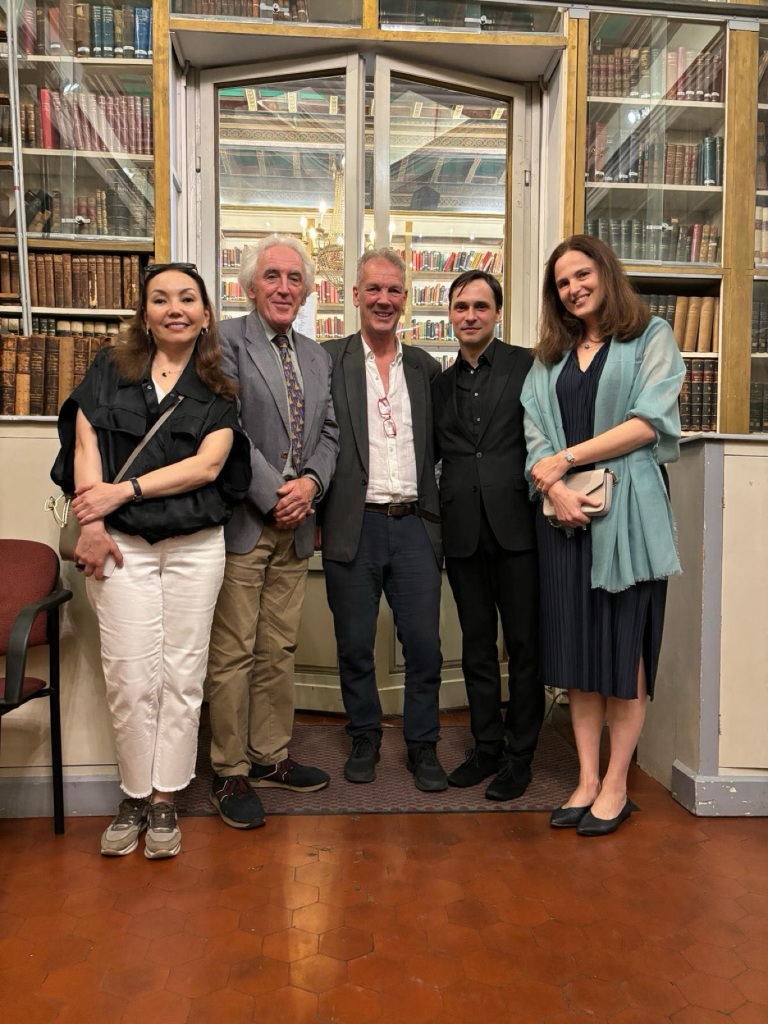
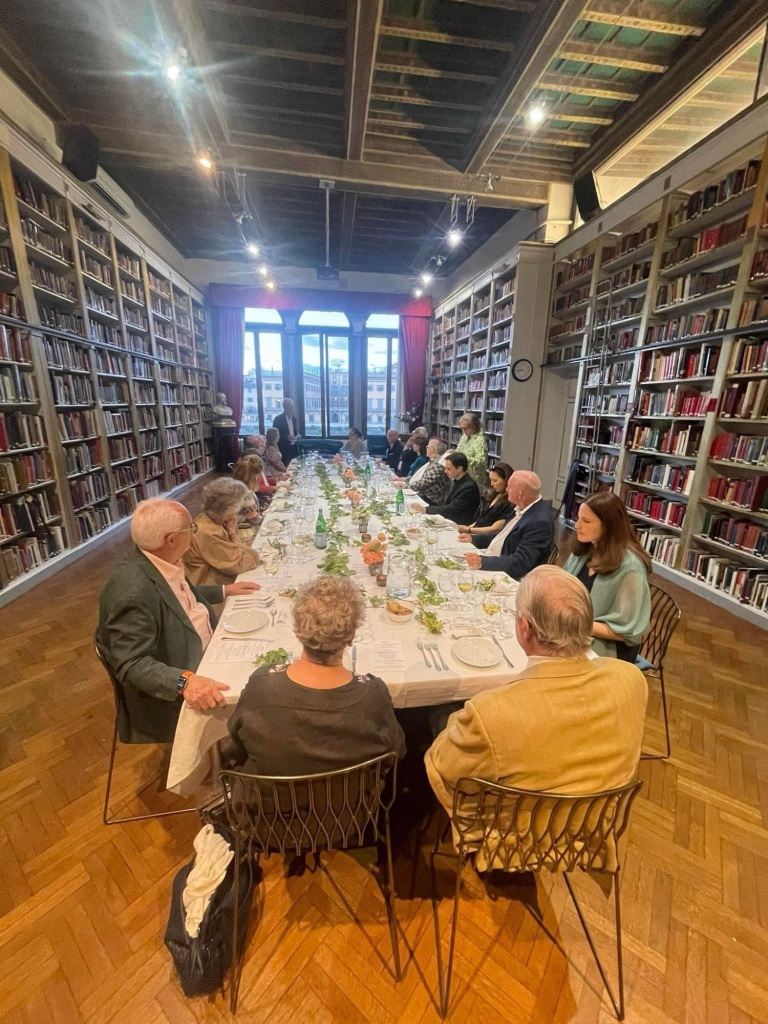

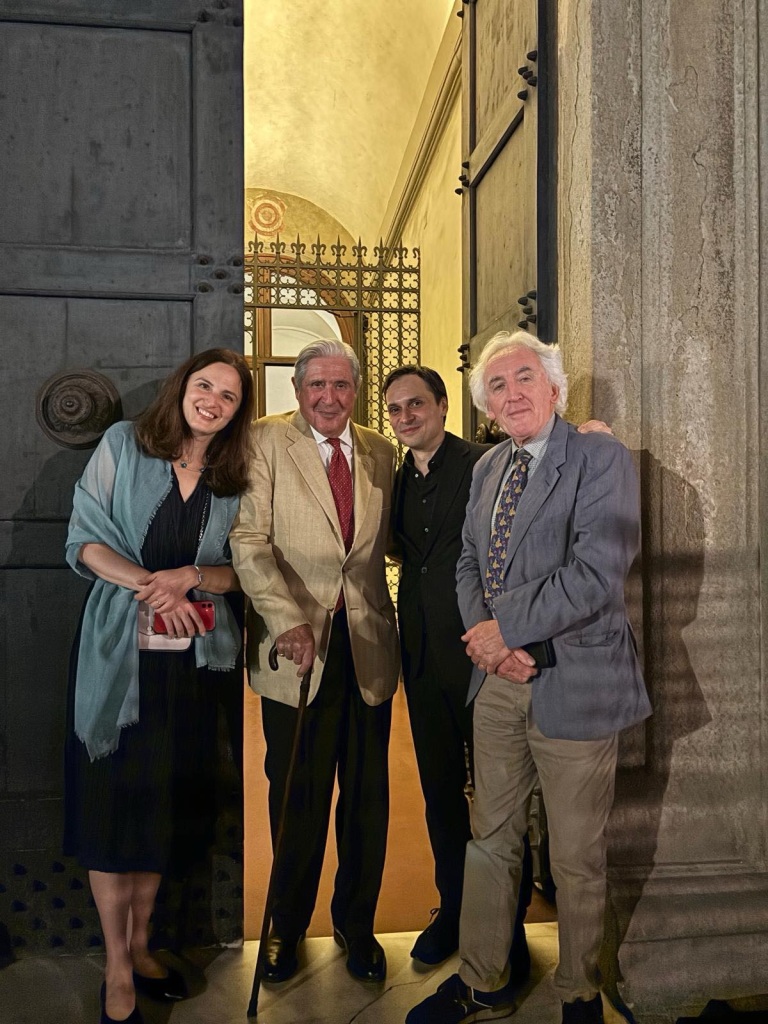
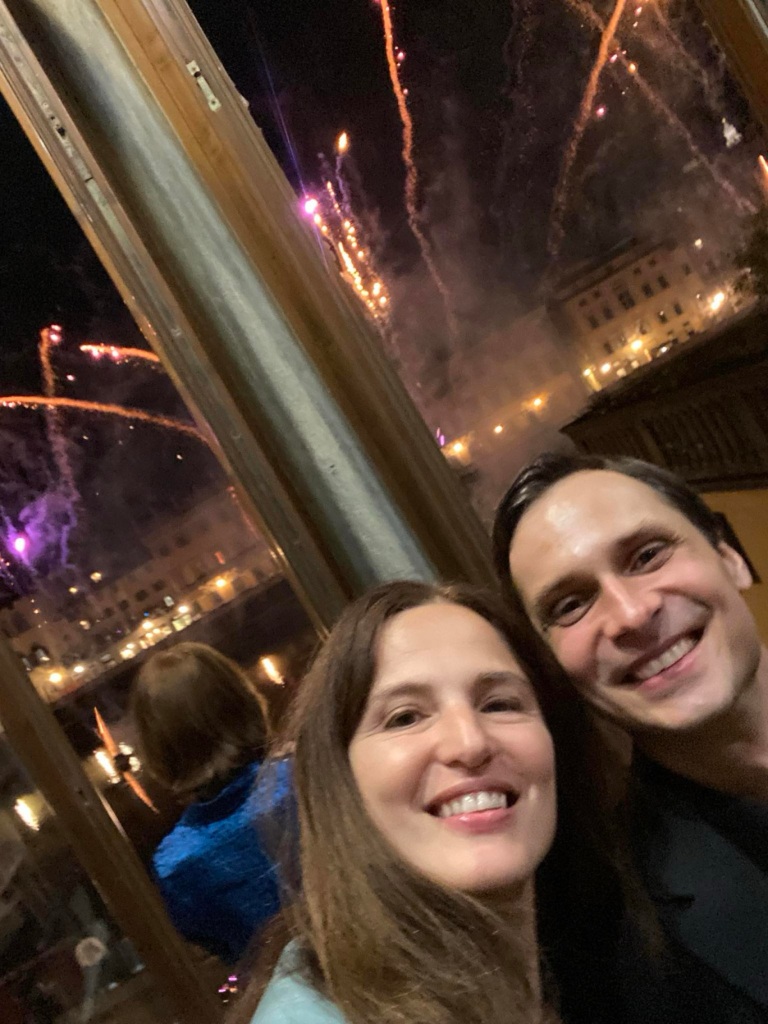

27 January 1756. Salzburg. 5 December 1791 Vienna
Fantasia No. 4 in C minor, K. 475 was composed by Mozart in Vienna on 20 May 1785 and was published as Opus 11, in December 1785, together with the Sonata in C minor K.457, the only one of Mozart’s piano sonatas to be published together with a work of a different genre.

This astonishing Fantasia is probably one of Mozart’s most innovative compositions for solo keyboard. It was composed for Therese Trattner (1758–1793), and published by Artaria in Vienna towards the end of 1785, alongside the Piano Sonata in C minor K.457.
Therese (born Maria Theresia) Trattner was the daughter of the court mathematician Joseph Anton Nagel. In 1776, she married the widowed Johann Thomas Trattner, a Vienna publisher and bookseller that Mozart knew well. After Mozart settled in Vienna in 1781, Therese Trattner became one of his first piano students, and surely one of the most talented, she remained so until the composer’s death. In 1784, the Mozarts lived in Trattner’s house on the Graben in Vienna. Well connected in Viennese society, Therese Trattner helped him to organise three subscription concerts here, at which the Piano concertos were performed and which further promoted his reputation as a piano virtuoso in Vienna. She also gave concerts (“academies”) herself in her flat in the Trattnerhof, at which Mozart was present.
Although published together Fantasia K.475 and Sonata K.457 were conceived independently: the rediscovery of the autograph of the two works confirms this.

31 January 1797, Himmelpfortgrund Vienna 19 November1828 Vienna
The Fantasie in C major, Op. 15 ( D.760), popularly known as the Wanderer Fantasy, is a four-movement fantasy for solo piano composed by Schubert in 1822 when only 25 in a life that was tragically cut short by the age of 31.It is widely considered his most technically demanding composition for the piano and Schubert himself said “the devil may play it,” in reference to his own inability to do so properly.The whole work is based on one single basic motif from which all themes are developed. This motif is distilled from the theme of the second movement, which is a sequence of variations on a melody taken from the lied “Der Wanderer”, which Schubert wrote in 1816. It is from this that the work’s popular name is derived.The four movements are played without a break. After the first movement Allegro con fuoco ma non troppo in C major and the second movement Adagio (which begins in C-sharp minor and ends in E major), follow a scherzo presto in A-flat major and the technically transcendental finale, which starts in fugato returning to the key of C major and becomes more and more virtuosic as it moves toward its thunderous conclusion.Liszt was fascinated by the Wanderer Fantasy, transcribing it for piano and orchestra (S.366) and two pianos (S.653). He additionally edited the original score and added some various interpretations in ossia and made a complete rearrangement of the final movement (S.565a).I remember a recent lesson I had listened to of Elisso Virsaladze in which I was struck by the vehemence of the Wanderer Fantasy and the ragged corners that we are more used to in a Beethoven almost twice Schubert’s age .It made me wonder about the maturity of the 25 year old Schubert and could he have had a premonition that his life was to be curtailed only six years later.We are used to the mellifluous Schubert of rounded corners and seemless streams of melodic invention.But surely in the final three sonatas written in the last months of his life the A major and C minor start with a call to arms and only in the last B flat sonata do we arrive at the peace and tranquility that Beethoven was to find too in his last sonata.But the deep rumblings in the bass in Schubert’s last sonata give food for thought that his life was not all sweetness and light.I remember Richter’s long tribulation in the recording studio to put on record as near definitive version as possible of the Wanderer Fantasy with the help of the pianist and musicologist Paul Badura Skoda.

Johannes Brahms 7 May 1833 Hamburg 3 April 1897 (aged 63)
Vienna
The Rhapsodies, Op. 79, for piano were written by Brahms in 1879 during his summer stay in Portschach,when he had reached the maturity of his career. They were inscribed to his friend, the musician and composer Elisabeth von Herzogenberg. At the suggestion of the dedicatee, Brahms reluctantly renamed the sophisticated compositions from “Klavierstücke” (piano pieces) to “rhapsodies”.
- No. 1 in B minor. Agitato is the more extensive piece, with outer sections in sonata form enclosing a lyrical, nocturne-like central section in B major and with a coda ending in that key.
- No. 2 in G minor. Molto passionato, ma non troppo allegro is a more compact piece in a more conventional sonata form.


Sasha Grynyuk Anniversary recital of a great pianist in Perivale
Sasha Grynyuk astonishes and seduces with superb musicianship and artistry together with friends at St Mary’s
Una risposta a "Sasha Grynyuk in Milan and Florence Mastery and musicianship combine with poetic sensibility and intelligence"